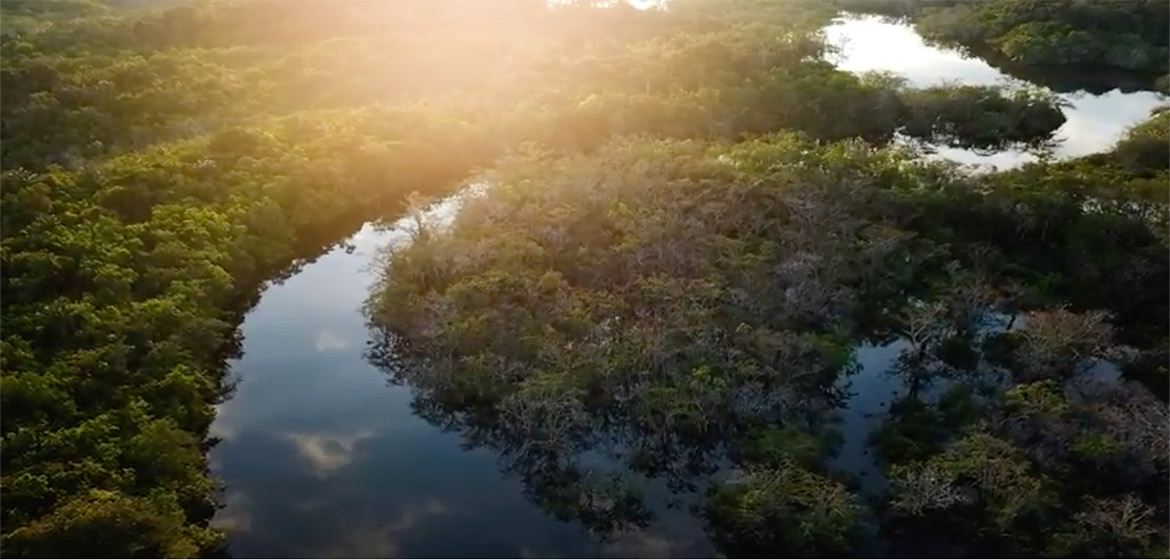By Rachel Riederer
When the struck an indigenous community in the Ecuadorian Amazon, in April, the initial victims of the disease died without ever being tested. The government’s response to this outbreak in the Secoya nation was sluggish—the first test results appeared two weeks after the first death. The Secoya tribal president, Justino Piaguaje, accused the government of abandoning them to their fate in remote communities, surrounded by oil fields and palm plantations. The tribe had just seven hundred members in Ecuador, so the death of an elder meant, in addition to the personal loss of a loved one, the disappearance of language, history, and cultural knowledge. Jimmy Piaguaje, a filmmaker and the cousin of Justino (all Secoya have the last name Piaguaje or Payaguaje), lost an uncle and a grandfather to the disease. He said, “We were afraid that we would go extinct.”
During the peak of the outbreak, when the morgues of Ecuador’s largest city, Guayaquil, were overflowing—and while indigenous communities attempted to quarantine—the oil, mining, and forestry industries continued to work in the rain forest. In May, Ecuador’s coalition of indigenous governments, confeniae, launched an online dashboard to track cases of the disease in indigenous communities and identify outbreaks so that medical brigades, PCR tests, and emergency kits could be directed to the places that needed them. As of November, the dashboard had logged more than three thousand cases in ten indigenous nations. Carlos Mazabanda, Amazon Watch’s field coördinator for Ecuador, who worked on creating the dashboard, said, “In the absence of a response from the government, indigenous peoples were forced to take matters into their own hands.”
Justino, the Secoya tribal president, had the same reaction. He said that the deaths of four elders in his community underscored the importance of keeping traditions alive, and one tradition stood out. After it became clear that the outside world would not offer protection from covid-19, Secoya leaders decided to draw on the tribe’s history of medicinal plant use and develop their own treatment.
In August, a group assembled: Justino, experienced herbalists, and two activists from the N.G.O. Amazon Frontlines, which has been helping indigenous groups in the upper Amazon respond to covid, arranged to make the full-day river trip from the Secoya villages, in northeastern Ecuador, to the remote Lagartococha region, at the country’s eastern edge, to harvest local medicinal plants for a remedy. Jimmy, the filmmaker, along with his best friend and collaborator, Ribaldo, were there to document the journey. Lagartococha, a labyrinthine network of lagoons, slow-moving creeks, and flooded forests, is the Secoya’s traditional homeland. In the nineteen-forties, during a border dispute between Ecuador and Peru, the area was militarized and the Secoya were forced out on both sides of the border. In recent years, Secoya have started returning to the area to fish, hunt, and gather wild plants.
The Amazon is often described—correctly—as being at an ecological tipping point. Now the region is near a cultural tipping point, as well. The forest is home to 1.6 million indigenous people, communities that have long managed, and lived off of, the forest’s ecosystems. Their survival becomes more tenuous as rivers are dammed and trees are clear-cut or burned to make way for agriculture and mineral extraction. As the group sailed down the Aguarico River, in a craft shaped like a dugout canoe but motorized and made of fibreglass, it passed a barge loaded with giant gravel trucks being ferried deep into the forest to construct new roads.
When the boat turned onto a smaller channel, aerial footage taken from a drone operated by the Secoya team showed it crossing an improbably sharp line in the water, where the gray of the Aguarico gives way, abruptly, to blackwater dyed inky dark by decaying plants. The flooded forests and lagoons of Lagartococha look like places outside of time, with tangles of woody lianas and layers of foliage that appear as they have for thousands of years. When the group arrived, members set up the camp that would serve as their home base for three days and began harvesting herbs and bitter barks. Alfredo Payaguaje, a Secoya herbalist, described the functions of each plant—an herb called umu’co, or cat’s claw, to help with fever; a wild ginger to relieve a cough; the bitter bark of the cinchona tree, full of quinine, to alleviate inflammation. He likened the forest to an open-air market: “There are things you eat, you build with, remedies.”
Tribal leaders and activists have told me that covid-19 is an “existential threat” to the indigenous peoples of the Amazon, one with a disturbing resemblance to the wave of infectious disease that decimated the people of the Americas, hundreds of years ago, when European settlers first arrived. Mazabanda, of Amazon Watch, also sees an indication of contemporary politics in the way that the pandemic has played out in Ecuador: “The truth is that the government views indigenous peoples as obstacles to unrestricted access to the vast natural resources of the Amazon.” This is evident, he told me, in “the lack of emergency government support for indigenous peoples and the reckless designation of extractive industries as ‘essential services.’ ”
After the trip to Lagartococha, Secoya leaders distributed the herbal treatment among their citizens and to neighboring indigenous groups. Though not a cure, the tribal medicine helps alleviate covid-19 symptoms. Jimmy said that sharing the treatments—like sharing his film about the expedition—has a dual purpose. In addition to helping people get through the illness, he said, “Our medicine will help make the world aware that the indigenous world still has much to share, that we have a lot of knowledge.” Jimmy and Justino’s group aims to demonstrate not just that the ecosystem of the Amazon is more valuable intact than stripped for parts but that its inhabitants’ history, culture, and medicine have vast importance as well.
Source:
Related to SDG 15: Life on land and SDG 10: Reduced inequalities



